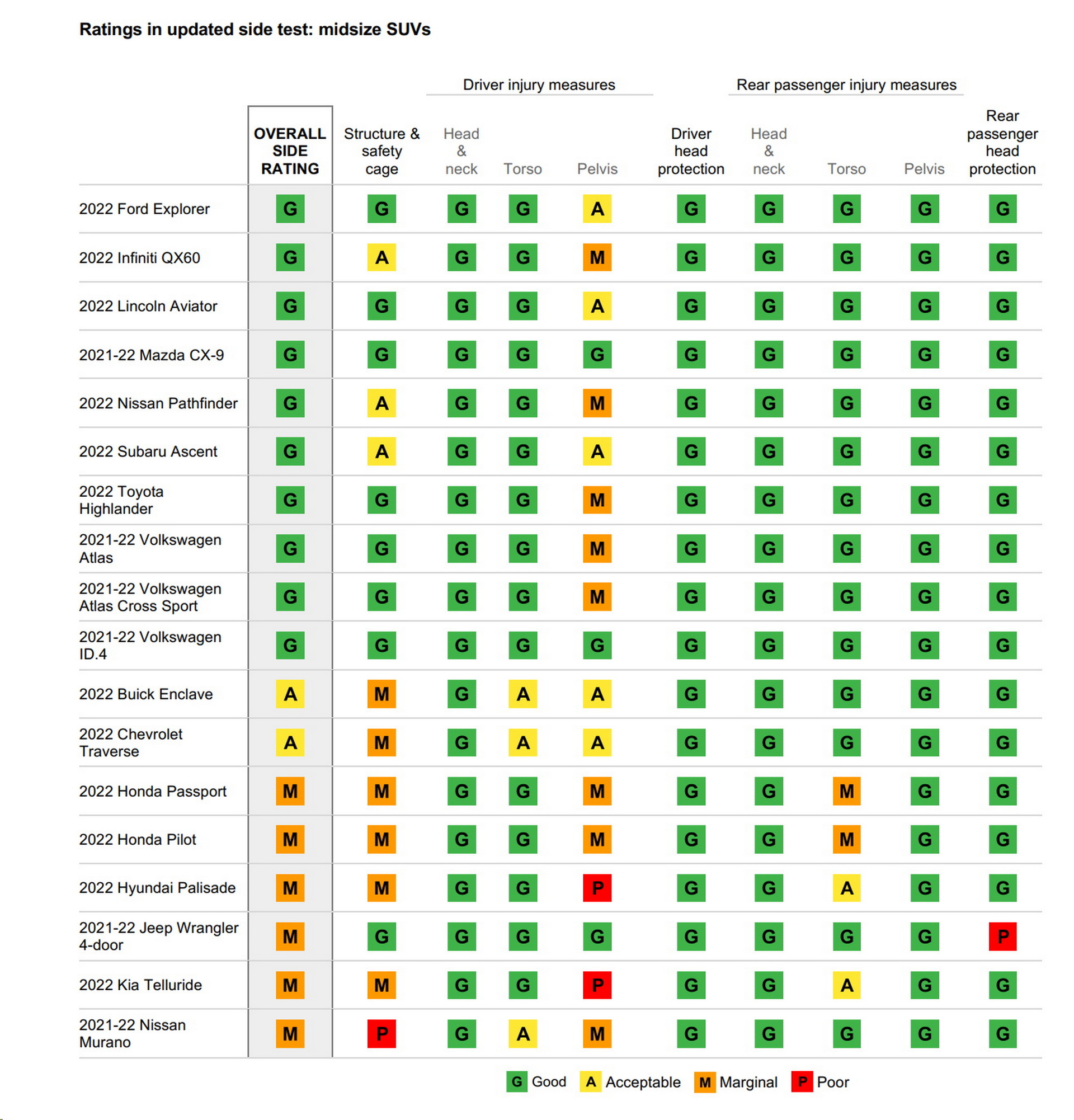The Institute for Road Safety Insurance (IIHS) today unveiled a new and complex set of side effects. The cars tested this time were medium-sized SUVs and they were very good.
The Institute has already announced the results of a new test mode for SUVs, in which only one car received an overall “Good” rating. For mid-size SUVs, that number has more than halved.
In total, 10 of the 18 cars tested received a “good” rating: Ford Explorer, Infiniti QX60, Lincoln Aviator, Mazda CX-9, Nissan Pathfinder, Subaru Ascent, Toyota Highlander, Volkswagen Atlas, Volkswagen Atlas Cross Sport and Volkswagen ID.4 , all 2022 models.
Also read: IIHS has introduced stricter side effects testing and small SUVs are struggling
Within this group, VW ID.4 and Mazda CX-9 received “good” ratings on all criteria related to driver and passenger injuries, including “structure and safety net”, “torso”, and “driver’s head protection”. “,” Rear passenger head protection “, etc.
The 4-door Jeep Wrangler was the only car to receive a “bad” rating in this latter category due to the lack of airbags in the rear curtain. It was to get a “limit” rating on the new test scheme of six cars (Nissan Murano, Kia Telluride, Hyundai Palisade, Honda Pilot and Honda Passport). Buick Enclave and Chevrolet Traverse had slightly higher “Acceptable” ratings.
The new test is designed to better reflect the modern car landscape. The estimate now uses a 4,200 pound (1905 kg) obstacle to hit a test vehicle to better reflect the weight of modern SUVs. This is 3300 pounds (1497 kg) higher than the previously used barrier. The barrier itself has a honeycomb that acts like a modern vehicle in the event of a collision.
The updated test is in many ways a confirmation of the work done by automakers to make cars safer. Many vehicles were passing under the old parameters, so IIHS decided that it could make testing more difficult to encourage carmakers to build safer vehicles, as well as to help consumers better differentiate their vehicles.
As a result, the heavy obstacle now allows test vehicles to run at a speed of 37 miles (60 km / h) instead of 31 miles (50 km / h). These modifications mean that the cars being tested together will get 82% more power.
Becky Mueller, a senior research engineer at IIHS, who co-founded the new test protocol, said: “These results will help confirm the adjustments that need to be made to other vehicles in the future.”
